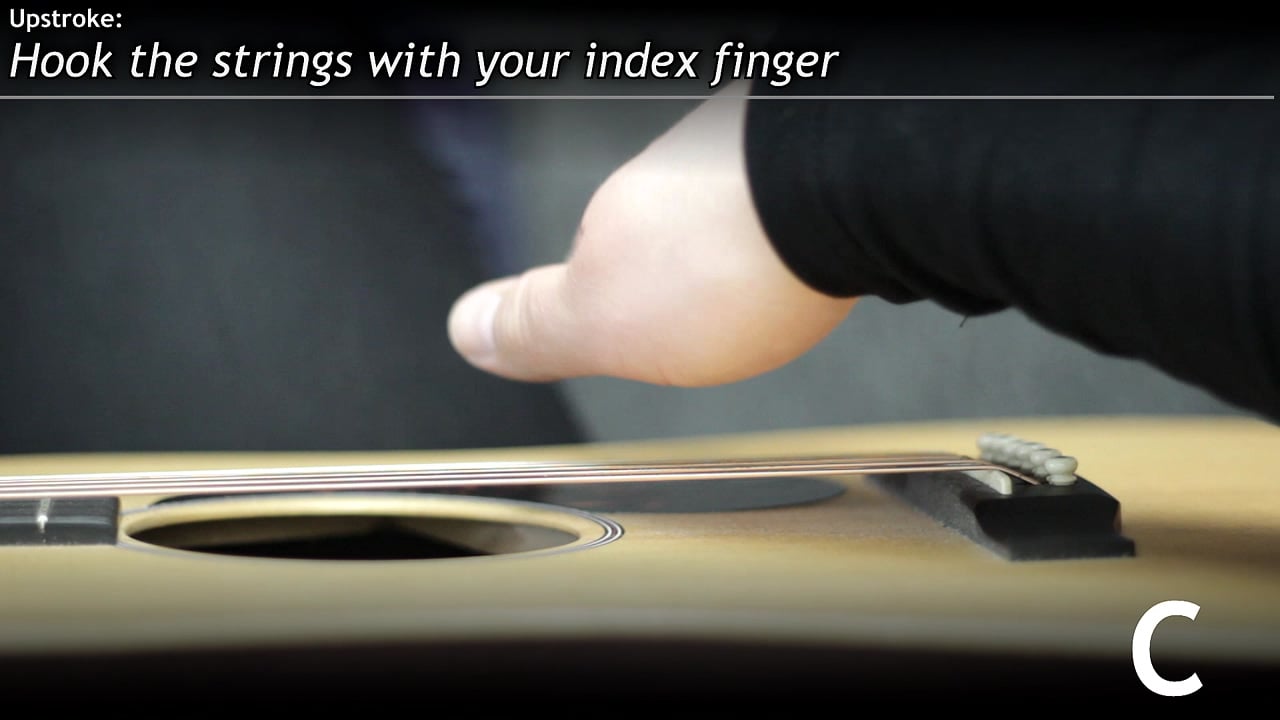Strumming your acoustic guitar like a professional can seem like a daunting task, especially when you’re just starting out. But fear not, aspiring musicians! With a little practice and a lot of attitude, you too can master the art of strumming like a true guitar virtuoso. In this article, we’ll break down some essential acoustic guitar patterns that will have you strumming your way to musical greatness in no time. So grab your guitar, channel your inner rock star, and get ready to strum like you’ve never strummed before!
Contents
- 1 Understanding the Basics of Guitar Strumming
- 2 Exploring Common Strumming Patterns for Beginners
- 3 Diving Deeper into Advanced Rhythmic Strumming Techniques
- 4 Incorporating Fingerstyle Strumming into Your Repertoire
- 5 Enhancing Your Performance with Dynamics and Tempo Variation
- 6 Mastering the Art of Muting and Percussive Strumming
- 7 Adapting Strumming Patterns Across Different Music Genres
- 8 FAQs
- 9 Strum on, Rockstar!
Understanding the Basics of Guitar Strumming
When it comes to guitar strumming, it’s all about finding your groove and getting into the rhythm. It’s like dancing with your fingers on the strings!
Here are some basics to keep in mind:
- Hold the guitar comfortably and make sure your wrist is loose and relaxed. You don’t want any stiff strumming movements!
- Start with simple up and down strumming patterns to get the hang of it. It’s like patting your head and rubbing your belly at the same time, but with a guitar in hand.
Remember, practice makes perfect! Don’t be afraid to experiment and try different strumming techniques. Maybe you’ll discover your own signature strumming style!
So grab your guitar, strum along to your favorite songs, and unleash your inner rockstar. Who knows, maybe you’ll be the next guitar hero!
Exploring Common Strumming Patterns for Beginners
So you’ve picked up the guitar and you’re ready to rock out, but you’re not quite sure where to start with your strumming patterns. Don’t worry, we’ve got you covered with some beginner-friendly strumming patterns that will have you jamming in no time!
First up, we have the classic down-up strum. This is the bread and butter of strumming patterns and it’s as simple as it sounds – just strum down, then strum up. Keep the rhythm steady and you’ll be playing along to your favorite songs in no time!
Next, let’s try the down-down-up pattern. This one adds a little extra flair to your strumming – start with two down strums, then finish with an up strum. It might take a bit of practice to get the timing just right, but once you do, you’ll be amazed at how much depth it can add to your playing.
Finally, let’s tackle the down-up-down-up pattern. This one is a bit more complex, but it’s a great way to build up your strumming skills. Start with a down strum, followed by an up strum, then repeat. Once you get the hang of it, you’ll be able to incorporate it into all sorts of songs and styles.

Diving Deeper into Advanced Rhythmic Strumming Techniques
Alright, grab your air tank and scuba gear because we’re about to dive deeper into the mysterious world of advanced rhythmic strumming techniques. Strap on your goggles and get ready to explore new depths in your strumming abilities!
First up, let’s talk about the elusive technique known as the “ghost strum.” This sneaky little move involves muting the strings with your fretting hand while still strumming with your picking hand. It’s like strumming without making a sound, a real ghostly experience! Practice this technique until you can make your guitar whisper like a shadow in the night.
Next, let’s tackle the rhythmic juggernaut that is the “polyrhythm.” This advanced technique involves playing two or more different rhythms simultaneously, creating a complex and mesmerizing sound. It’s like patting your head and rubbing your stomach at the same time, but with a guitar in your hands. Mastering the polyrhythm will take your strumming skills to new dimensions!
And finally, we come to the “strumming triplets.” These three-beat wonders add speed and flair to your strumming, creating a lively and dynamic sound. It’s like a triple shot of espresso for your guitar playing! Practice strumming triplets until you can make your guitar dance like a caffeinated kangaroo.

Incorporating Fingerstyle Strumming into Your Repertoire
So you’ve mastered the art of strumming with a pick, but have you ever considered ? It may seem daunting at first, but with a little practice and patience, you’ll be fingerpicking like a pro in no time!
One of the key benefits of fingerstyle strumming is the ability to create a more dynamic and nuanced sound. By using your fingers instead of a pick, you have greater control over the attack and tone of each note, allowing you to add depth and complexity to your playing.
Ready to give it a try? Here are a few tips to help you get started:
- Start by practicing basic fingerpicking patterns on an open chord. Focus on maintaining a steady rhythm and ensuring that each note rings out clearly.
- Experiment with different finger combinations – try using your thumb for bass notes and your other fingers for higher-pitched strings.
- Don’t be afraid to mix things up! Add in some hammer-ons, pull-offs, and slides to create interest and variation in your playing.
Remember, mastering fingerstyle strumming takes time and dedication, so don’t get discouraged if you don’t nail it right away. Keep practicing, experiment with different techniques, and most importantly, have fun with it!

Enhancing Your Performance with Dynamics and Tempo Variation
Do you ever feel like your performances are missing that extra oomph? Well, fear not! By incorporating dynamics and tempo variation into your playing, you can take your performance to the next level and wow your audience like never before.
First off, let’s talk about dynamics. Dynamics are like the volume knob of music – they can make your playing sound softer or louder, adding depth and emotion to your performance. By mastering dynamics, you can create tension and release in your music, keeping your audience on the edge of their seats. So, don’t be afraid to play around with different volumes and experiment with how it affects the overall feel of your piece.
Next, let’s dive into tempo variation. Playing at a consistent tempo can get monotonous, so why not spice things up by throwing in some tempo changes? Speeding up or slowing down certain sections can add excitement and drama to your performance, keeping your audience engaged and on their toes. Plus, it shows off your versatility as a musician and allows you to showcase your unique style.
So there you have it – by incorporating dynamics and tempo variation into your playing, you can enhance your performance and captivate your audience like never before. So go ahead, unleash your creativity and take your music to new heights!
Mastering the Art of Muting and Percussive Strumming
So you think you’re a guitar pro, huh? Well, if you really want to take your skills to the next level, it’s time to master the art of muting and percussive strumming. Trust me, people will be lining up to hear you play once you nail these techniques.
Let’s start with muting. This technique is all about controlling the sound of your guitar by dampening the strings with your picking hand. It’s like having a secret superpower that allows you to create a staccato effect that will make your playing sound tight and professional. Don’t worry if it feels a bit awkward at first – with a little practice, you’ll be muting like a pro in no time.
Now, on to percussive strumming. This is where things get really fun. By incorporating rhythmic slaps and taps on your guitar body into your strumming patterns, you can add a whole new dimension to your playing. Imagine being able to create a catchy beat with just your guitar – it’s like being your own one-man band!
So, grab your guitar, set aside some practice time, and get ready to wow your friends with your newfound muting and percussive strumming skills. Who knows, you might just become the next guitar hero!
Adapting Strumming Patterns Across Different Music Genres
So you’ve mastered the art of strumming on your guitar, but now you’re ready to take your skills to the next level by adapting your strumming patterns across different music genres. It’s time to shake things up and get out of your comfort zone! Here are some tips and tricks to help you navigate the wild world of strumming in various genres:
Rock:
– When playing rock music, think power chords and driving rhythms. Keep your strumming hand loose and aggressive, with downstrokes dominating the pattern.
– Experiment with palm muting for a more intense sound that will have the crowd headbanging along with you.
– Don’t be afraid to mix up your strumming patterns with some quick triplet strums or double stops for added flavor.
Country:
– For country music, stick to a more laid-back strumming pattern with a strong emphasis on the backbeat.
– Incorporate some fingerpicking techniques for a twangy, authentic sound that will transport you straight to the heart of Nashville.
– Remember to keep it simple and let the lyrics shine through – sometimes less is more in the world of country music.
Funk:
– When tackling funk music, get ready to unleash your inner groove monster. Experiment with syncopated rhythms and funky accents to keep the listener on their toes.
– Don’t be afraid to throw in some staccato strums and percussive hits to really drive home that danceable, funky feel.
– Get comfortable with playing off the beat and adding in unexpected pauses – that’s where the magic happens in funk music.
FAQs
How do I improve my strumming technique?
Practice makes perfect! Start by focusing on a simple pattern and strumming it consistently until you feel comfortable. Then gradually increase the complexity of your patterns as you gain confidence.
What are some common strumming patterns for acoustic guitar?
Some classic patterns include the downstroke strum, the upstroke strum, the down-up strum, and the palm mute strum. Experiment with different combinations to find what works best for the song you’re playing.
How can I keep a steady rhythm while strumming?
Try tapping your foot in time with the beat to help keep a steady rhythm. You can also use a metronome to practice strumming along with a consistent tempo.
Should I use a pick or my fingers for strumming?
It’s ultimately up to personal preference, but using a pick can help you achieve a crisper and more defined sound. Experiment with both methods to see which works best for you.
How can I add dynamics to my strumming?
Try varying the intensity of your strumming by using different levels of pressure on the strings. You can also experiment with altering the speed of your strumming to add more dynamics to your playing.
Any tips for mastering barre chords while strumming?
Practice, practice, practice! Start by focusing on holding down the barre chord properly before adding in strumming. Once you feel comfortable with the chord shape, start incorporating strumming patterns to enhance your playing.
Strum on, Rockstar!
Congratulations on mastering the art of strumming with these essential acoustic guitar patterns! Now go forth and serenade the world with your newfound skills. Remember, practice makes perfect, so keep strumming away like there’s no tomorrow. And who knows, maybe one day you’ll be headlining your own sold-out concert. Keep on rockin’!



